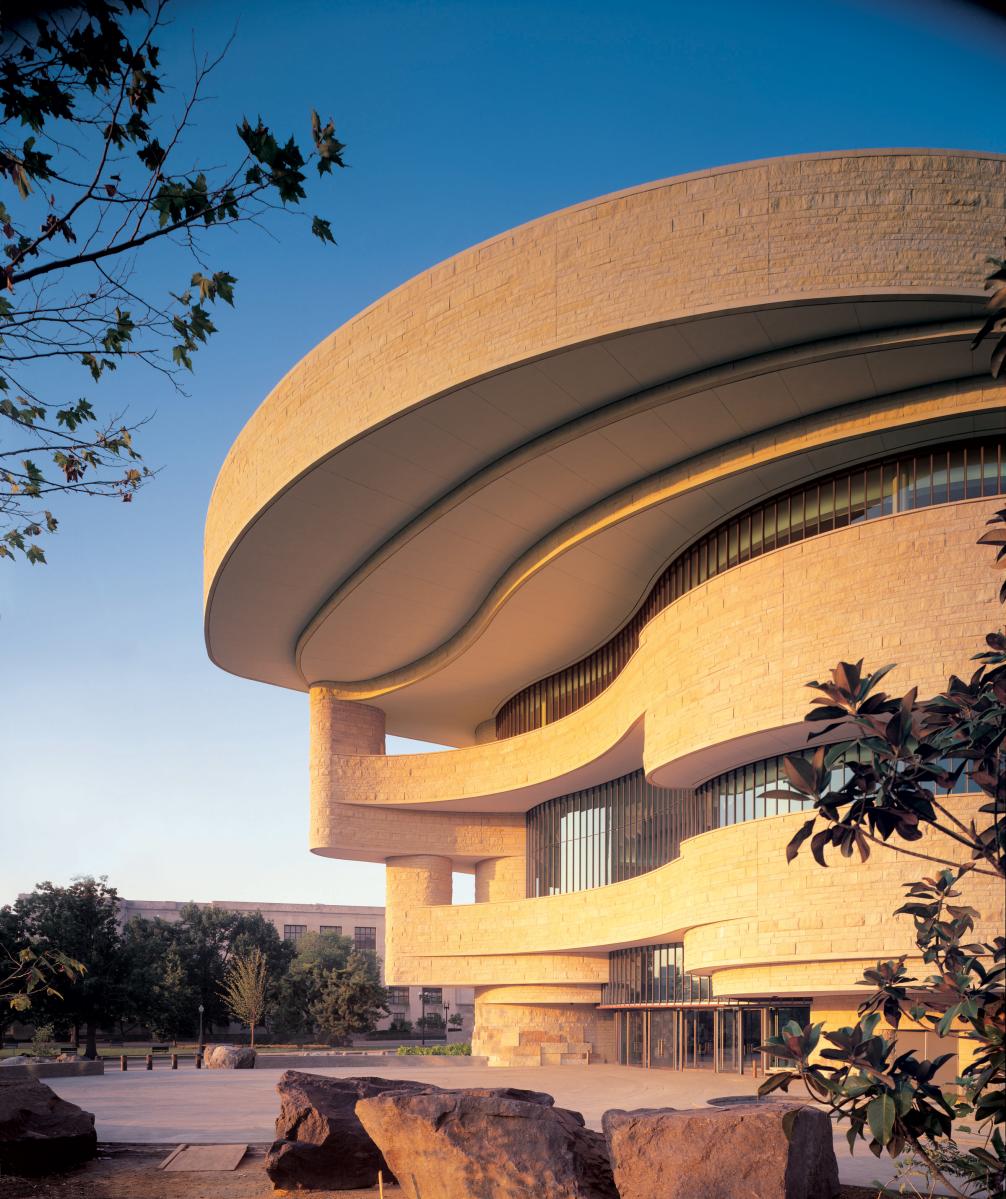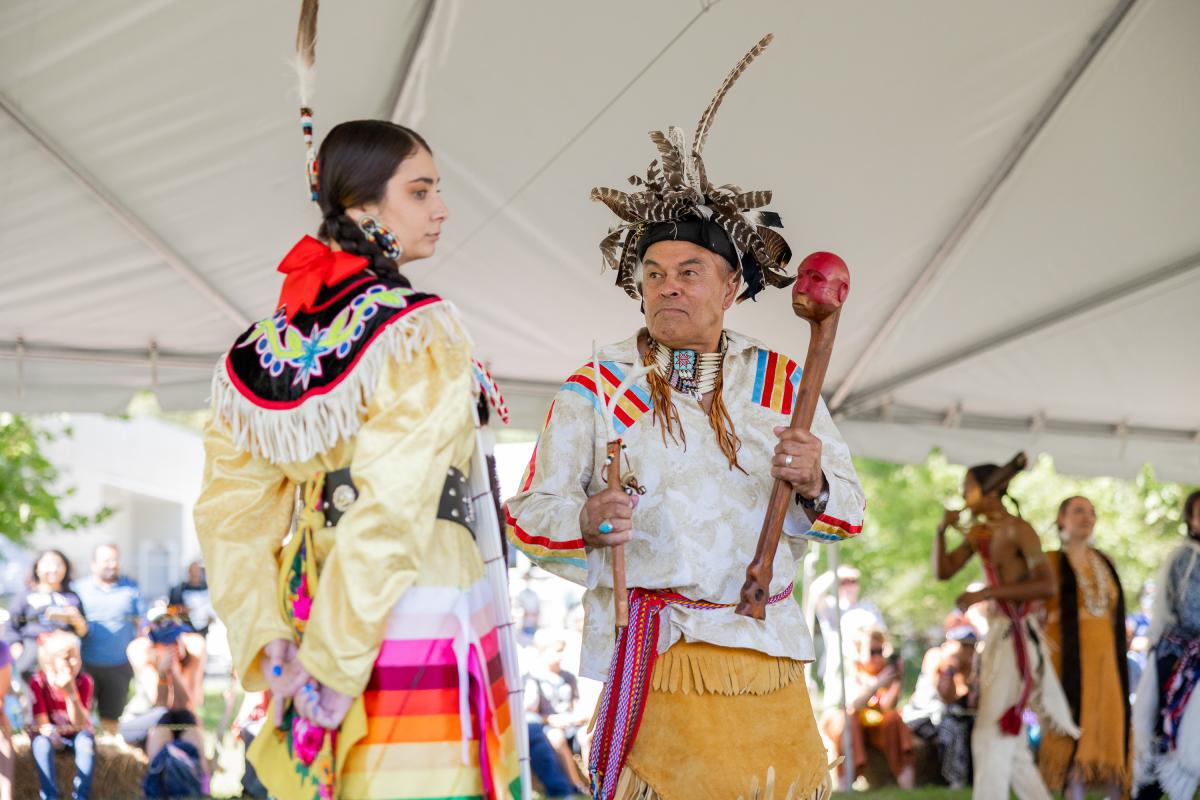Historically, Native American tribes chose to live near water sources like lakes, rivers, and coastlines. Water was a crucial element of survival, providing access to transportation, food sources like fish, and fertile land for farming. For many tribes, water was considered sacred and an essential part of their spiritual beliefs.
So it’s no surprise that evidence of Native Americans dating back at least 14,000 years has been found in Fairfax County. Bordered on three sides by water, the county has sites dating back to the Clovis people’s Paleoindian period in 12,000 BCE through to the Colonial period. Many of these sites are within protected parkland and are tirelessly studied by archaeologists.
As Native American Heritage Month arrives in November across the United States, we wanted to pay homage to the Native American presence in Northern Virginia. Many tribes have called Virginia their home—the Mattaponi, Pamunkey, Eastern Chickahominy, Rappahannock, Upper Mattaponi, Nansemond, Monacan, Nottoway, Cheroenhaka and Patawomeck among them.
In fact, the Patawomeck Tribe is the one that gave the Potomac River its name. So let’s take a look at the sites and events that honor these tribes in Fairfax County and nearby towns.
Native artifacts discovered at Fairfax County sites.
 Photo by Allen C. Browne, HMdb.org
Photo by Allen C. Browne, HMdb.org
With no written history, ancient cultures in Virginia passed stories down through generations and left evidence of their lives buried in the earth. Over time, clues to their hunting patterns and home lives have emerged in Fairfax County parks.
The evidence shows a long pre-European contact history divided into three periods: Paleoindian, lasting from 15,000 to 8,000 BCE; Archaic, ranging from 8,000 to 1,200 BCE; and Woodland, from 1,200 BCE to 1,600 CE. Here are five sites where history is being unearthed:
- Riverbend Park. Situated on a bend of the Potomac River in northern Fairfax County, Riverbend Park contains over 100 archaeological sites. Findings at Riverbend Park hail from all three Indigenous periods, indicating a long history at this particular part of the river. One reason may be that, just downriver is Great Falls Park. The waterfalls at Great Falls form a barrier to fish traveling upstream to spawn each year, making this area a prolific fishing resource that indigenous people have used for millennia. A variety of spear points, atlatl heads and other stone tools have been found at Riverbend Park and are on display in the park’s Visitor Center. A historical marker also tells the tale.
- Old Colchester Park and Preserve. With no parking, no facilities, and no marked trails, Old Colchester Park and Preserve along the Occoquan River is preserved as a significant archaeological site revealing artifacts dating back approximately 10,000 years through to the Colonial and Civil War periods. Native American artifacts found on the site include projectile points from the Archaic period, as well as fragments of soapstone and ceramic vessels from the Woodland period.
- Mount Air Historic Site. Known primarily for its Civil War era history, excavation at Mount Air has revealed a much older history. Piscataway and Fishtail projectile points made during the early Woodland period have been found on the site.
- Lake Accotink Park. Evidence of Native settlement at Lake Accotink dates back 12,000 years. These tribes were largely nomadic, following wild game and the seasons. Artifacts found here include stone tools from the Paleoindian and Archaic periods when Dogue, Piscataway, Patawomeck and Powhatan tribes came for the location’s abundant fish, game and tool-making resources.
- Elizabeth Hartwell Mason Neck National Wildlife Refuge. You won’t find a more historic peninsula in Northern Virginia than Mason Neck. Originally a Dogue village called Tauxenent, the tribe called this area Occoquan, meaning “at the end of the river.” This peninsula is where the Occoquan River merges with the Potomac River. Around 1360, a skilled Dogue individual carved a soapstone effigy of a beaver or otter. It may have been part of a pipe or a larger figurine. An historical marker at nearby Belmont Bay features the story of this site. Today, Mason Neck is home to a large bald eagle population and is the site of a founding father’s historic home, George Mason’s Gunston Hall.
The authoritative word on Native American history.

Image courtesy Smithsonian // © 2004 Judy Davis/Hoachlander Davis Photography for Smithsonian
Fairfax County is just across the river from Washington, DC. A short Metro ride will lead you to the spectacular Smithsonian’s National Museum of the American Indian. The NMAI cares for one of the world's most expansive collections of Native artifacts, including objects, photographs, archives, and media covering the entire Western Hemisphere, from the Arctic Circle to Tierra del Fuego. On a personal note, it is my favorite of the Smithsonian museums. The energy inside is sacred and palpable. Highly recommended.
Local events featuring Native American heritage.

Here are some Native American events to look for each year in the Northern Virginia area:
- Virginia Native American Festival, held each September at Riverbend Park and featuring education, demonstrations, performances and vendors.
- American Indian Heritage Month Events, such as 2024’s Native American Soldiers in WWI talk.
- Smithsonian Events, held throughout the year online and at the National Museum of the American Indian.
When you visit one of the many parks along the GW Parkway in Fairfax County, I encourage you to sit alongside the river. Before long, if you set your mind to it, your imagination will lead you back thousands of years to a time when Native Americans fished those shores, drank the water, scouted for intruders, gathered food and lived along the banks. The energy of these thriving tribes is still captured in the land, just waiting for your awareness to unlock it.





